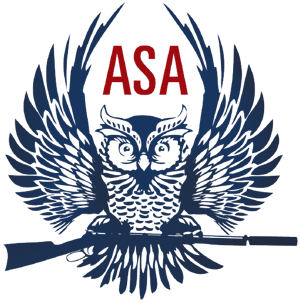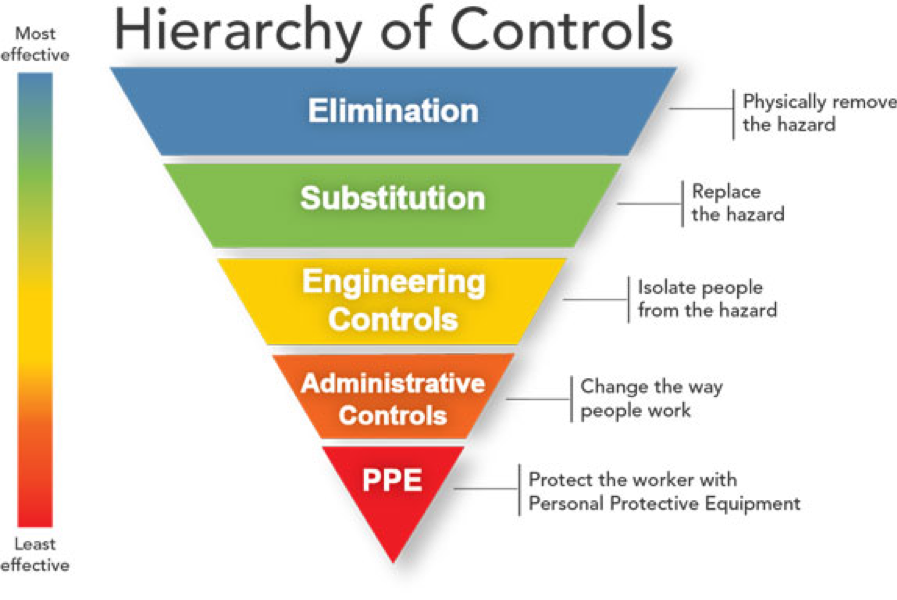The Scientific Case for Suppressors
Recent News 10/27/18 9:33 AM American Suppressor Association 5 min read
 It is sometimes said, if the firearm were invented today, it would be required by law to have a muffler. Today we understand the risk of noise-induced hearing loss much better than ever before. “Hearing loss affects more than 28 million Americans, including more than half of those over age 75. Hearing problems—including tinnitus, which is a ringing, buzzing, or another type of noise that originates in the head—are by far the most prevalent service-connected disability among American Veterans.”[1] In the shooting community, we’ve frequently heard that suppressed gunfire that is below 140dB is considered “hearing safe.” How was this threshold derived? First off, in actuality, we would be wise to avoid the term “hearing safe” and instead use “hearing safer.” Even when used with a suppressor, firearms are loud – between 110 dB – 140 dB depending on caliber. Although modern cars have a multitude of airbags, that does not mean that one should forego using a seatbelt. The use of a seatbelt, in conjunction with airbags, create a safety system. The same should be considered when using a suppressor. For all calibers, perhaps except .22 LR, properly fitted earplugs should be used in conjunction with a suppressor to minimize the risk of hearing damage. Especially if you intend to shoot a lot, or shoot near others that are not using suppressors.
It is sometimes said, if the firearm were invented today, it would be required by law to have a muffler. Today we understand the risk of noise-induced hearing loss much better than ever before. “Hearing loss affects more than 28 million Americans, including more than half of those over age 75. Hearing problems—including tinnitus, which is a ringing, buzzing, or another type of noise that originates in the head—are by far the most prevalent service-connected disability among American Veterans.”[1] In the shooting community, we’ve frequently heard that suppressed gunfire that is below 140dB is considered “hearing safe.” How was this threshold derived? First off, in actuality, we would be wise to avoid the term “hearing safe” and instead use “hearing safer.” Even when used with a suppressor, firearms are loud – between 110 dB – 140 dB depending on caliber. Although modern cars have a multitude of airbags, that does not mean that one should forego using a seatbelt. The use of a seatbelt, in conjunction with airbags, create a safety system. The same should be considered when using a suppressor. For all calibers, perhaps except .22 LR, properly fitted earplugs should be used in conjunction with a suppressor to minimize the risk of hearing damage. Especially if you intend to shoot a lot, or shoot near others that are not using suppressors.
Now back to the 140dB threshold. Exposure to loud noises kills the nerve endings in the inner ear. The inner ear is lined with thousands of tiny hairs. They can break off following exposure to loud noises and once broken they do not grow back. “OSHA sets legal limits on noise exposure in the workplace. These limits are based on a worker's time-weighted average over an 8 hour day. With noise, OSHA's permissible exposure limit (PEL) is 90 dBA for all workers for an 8 hour day. The OSHA standard uses a 5 dBA exchange rate. This means that when the noise level is increased by 5 dBA, the amount of time a person can be exposed to a certain noise level to receive the same dose is cut in half.”[2] Any exposure above 140 dBA will cause permanent hearing damage. All firearms, even those shooting low-pressure rimfire cartridges have a report greater than 140 dB unsuppressed.
From a hearing conservation perspective, according to Dr. William W. Clark, the current Director of the Washington University School of Medicine’s Program in Audiology and Communication Sciences, “the most serious threat to hearing comes from recreational hunting or target shooting.”[3] The risk is in large part because many people choose not to use traditional hearing protection devices like earplugs and earmuffs because they want to be able to hear their surroundings. Multiple studies have found that between 70 to 80% of hunters never wear earplugs or earmuffs, and nearly half of all target shooters don't consistently wear traditional hearing protection.[4][5] Thus, it should come as no surprise that for every five years of hunting, hunters become seven percent more likely to experience high-frequency hearing loss.[6]
In a 2011 study, the Centers for Disease Control and Prevention (CDC) stated, “the only potentially effective noise control method to reduce students’ or instructors’ noise exposure from gunfire is through the use of noise suppressors that can be attached to the end of the gun barrel. However, some states do not permit civilians to use suppressors on firearms.”[7] California, Delaware, Hawaii, Illinois, Massachusetts, New Jersey, New York, and Rhode Island currently do not allow civilians to own suppressors. Connecticut and Vermont allow private ownership of suppressor but do not allow their use while hunting.
In a similar study from 2014 on noise exposure at shooting ranges, the CDC’s National Institute for Occupational Safety & Health (NIOSH) recommended, “if feasible and legally permissible, attach noise suppressors to firearms to reduce peak sound pressure levels.”[8] NIOSH utilizes a “Hierarchy of Controls” to reduce the risk of occupational hazards. Suppressors eliminate noise at the source and would be seen as the most effective method of reducing the risk of noise-induced hearing loss, while earplugs and ear muffs protect the end user from the risk – the least effective method.

In March 2017, the National Hearing Conservation Association’s Task Force on Prevention of Noise-Induced Hearing Loss from Firearm Noise stated that “using firearms equipped with suppressors” is one of “several strategies [that] can be employed to reduce the risk of acquiring NIHL and associated tinnitus from firearm noise exposure.”[9] There is solid scientific research by government organizations and hearing conservation organizations that all agree that suppressors are an effective way hunters and sport shooters can reduce their risk of permanent hearing damage.
The American Suppressor Association (ASA) is the unified voice of the suppressor industry. Its mission is to unite and advocate for the common interests of suppressor manufacturers, distributors, dealers, and consumers and promote the use of suppressors in hunting and shooting sports. To accomplish its mission, their principal initiatives focus on state lobbying, federal lobbying, and public education. The ASA is the country’s leading subject matter experts on suppressors and suppressor related advocacy. They have helped draft state and federal legislation, including the Hearing Protection Act, hosted countless suppressor demonstrations for legislators, are spearheading efforts to reduce transfer times, modernize the NFA process and to legalize commercial suppressor exportation through non-legislative means. They have actively lobbied in 28 states, as well as in Washington, D.C.
[1] https://www.research.va.gov/topics/hearing.cfm
[2]https://www.osha.gov/SLTC/noisehearingconservation/#loud
[3] Clark WW. (1991) Noise exposure from leisure activities: a review. J Acoust Soc Am 90(1):175–181.
[4] Wagner A, Stewart M, Lehman ME. (2006) Risk patterns and shooting habits of recreational firearm users. In: Abstracts of the National Hearing Conservation Association Annual Conference 2006, Tampa, Florida. NHCA Spectrum 23(Suppl. 1):28.
[5] Stewart M, Foley L, Lehman ME, Gerlach A. (2011) Risks Faced by Recreational Firearm Users. Audiology Today, March-April:38–52.
[6] Nondahl DM, Cruickshanks KJ, Wiley TL, Klein R, Klein BE, Tweed TS. (2000) Recreational firearm use and hearing loss. Arch Fam Med 9(4):352–357.
[7] Chen L, Brueck SE. (2011) Noise and Lead Exposures at an Outdoor Firing Range ─ California. Health Hazard Evaluation Report HETA 2011-0069-3140:5.
[8] Brueck SE, Kardous CA, Oza A, Murphy WJ. (2014) Measurement of Exposure to Impulsive Noise at Indoor and Outdoor Firing Ranges during Tactical Training Exercises. Health Hazard Evaluation Report HETA 2013-0124-3208:14.
[9] Murphy S, Meinke DK, Flamme GA, Murphy WJ, Finan DS, Lankford, JE, Tasko SM. (2017) NHCA Position Statement: Recreational Firearm Noise. NHCA Task Force on Prevention of Noise-Induced Hearing Loss from Firearm Noise: 1.